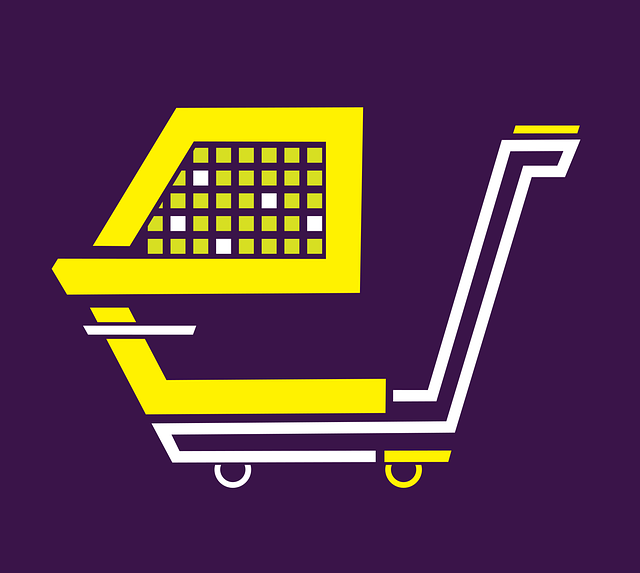Ecommerce chatbots have transformed online retail by providing AI-driven assistance, enhancing user engagement, and driving sales. Effective development involves defining target audience and desired outcomes, tailoring language style, and crafting robust scripts for seamless conversations. Seamless integration with platform infrastructure is crucial for success, followed by continuous improvement based on user feedback and performance analysis. Ecommerce chatbots offer personalized experiences, revolutionizing the online shopping landscape.
In today’s digital era, ecommerce chatbots are transforming customer interactions, offering instant support and personalized experiences. This comprehensive guide delves into the process of creating a scripted AI chatbot tailored for your business. We’ll explore the role and benefits of ecommerce chatbots, define their purpose and target audience, build effective dialogue flows, and provide strategies for seamless integration, rigorous testing, and continuous improvement.
- Understanding Ecommerce Chatbots: Their Role and Benefits
- Defining Your Chatbot's Purpose and Target Audience
- Building the Script: Dialogue Flow and Response Logic
- Integration, Testing, and Continuous Improvement
Understanding Ecommerce Chatbots: Their Role and Benefits

Ecommerce chatbots have become an integral part of modern online retail, offering a seamless and personalized customer experience. These AI-driven tools act as digital assistants, providing instant support to shoppers at every stage of their purchasing journey. From answering product queries to offering recommendations, these chatbots enhance user engagement and drive sales.
Their role extends beyond basic customer service; they collect valuable customer data, enabling retailers to gain insights into shopping behaviors and preferences. This data-driven approach allows businesses to tailor marketing strategies and improve product offerings. With their round-the-clock availability, ecommerce chatbots ensure that customers receive timely assistance, increasing satisfaction levels and fostering brand loyalty.
Defining Your Chatbot's Purpose and Target Audience

When creating a scripted AI chatbot, especially for an ecommerce platform, defining its purpose and target audience is a foundational step. Ecommerce chatbots are designed to enhance customer engagement, provide product recommendations, answer queries, and facilitate sales. Therefore, understanding your desired outcomes and the demographics of your potential users is crucial. For instance, a chatbot aimed at millennials might require a more casual and conversational tone, while one targeting business professionals could benefit from a more formal and concise language style.
Identifying your target audience also helps in tailoring the chatbot’s knowledge base. Ecommerce chatbots should be able to address common customer concerns and questions about products, shipping, returns, and payments. By knowing who you’re building for—whether it’s tech-savvy shoppers or those new to online purchases—you can ensure that your chatbot offers a relevant, engaging, and ultimately successful user experience.
Building the Script: Dialogue Flow and Response Logic

When building an ecommerce chatbot, crafting a robust script is paramount. The first step in this process involves designing the dialogue flow—mapping out how conversations will unfold between the chatbot and users. This includes identifying key touchpoints where customers might interact with your chatbot, such as browsing products, asking about availability, or seeking assistance with orders. Each interaction should be meticulously planned to ensure a seamless user experience.
The logic behind responses is equally crucial. Ecommerce chatbots need to be able to understand user queries and provide appropriate answers. This involves incorporating natural language processing (NLP) techniques to interpret user inputs and match them with predefined responses or dynamic content generated based on contextual information. By structuring the script with clear dialogue paths and sophisticated response logic, you can create an engaging, helpful, and effective chatbot that enhances the customer experience, drives sales, and improves overall business performance.
Integration, Testing, and Continuous Improvement

After developing your scripted AI chatbot, seamless integration is key to a successful launch, especially for ecommerce chatbots that need to enhance user experiences on online platforms. This involves connecting the chatbot to your website or application’s existing infrastructure, ensuring smooth interaction with other systems and data sources. Proper testing during this phase is vital to identify and rectify any glitches or compatibility issues early on.
Continuous improvement is an ongoing process in developing AI chatbots. Regularly gathering user feedback, analyzing chatbot performance metrics, and refining the script based on real-world interactions will enhance the chatbot’s effectiveness. Ecommerce chatbots can evolve to better understand customer needs, offer personalized product recommendations, and ultimately drive sales by providing a more engaging shopping experience.
Creating an effective eCommerce chatbot involves understanding its role in enhancing customer interactions and sales. By defining clear purposes and targeting specific audiences, you can build a script that delivers relevant, engaging conversations. Implementing this script through seamless integration and continuous testing ensures your chatbot becomes a valuable asset, streamlining processes and boosting client satisfaction. Remember, an ecommerce chatbot is not just a tool—it’s a gateway to personalized shopping experiences.
